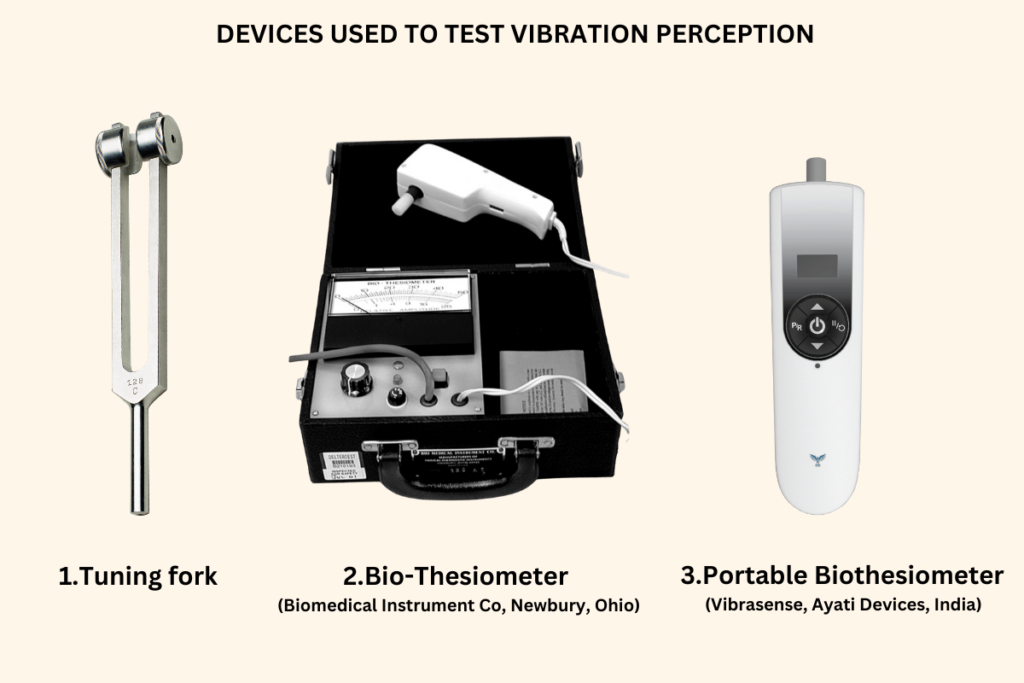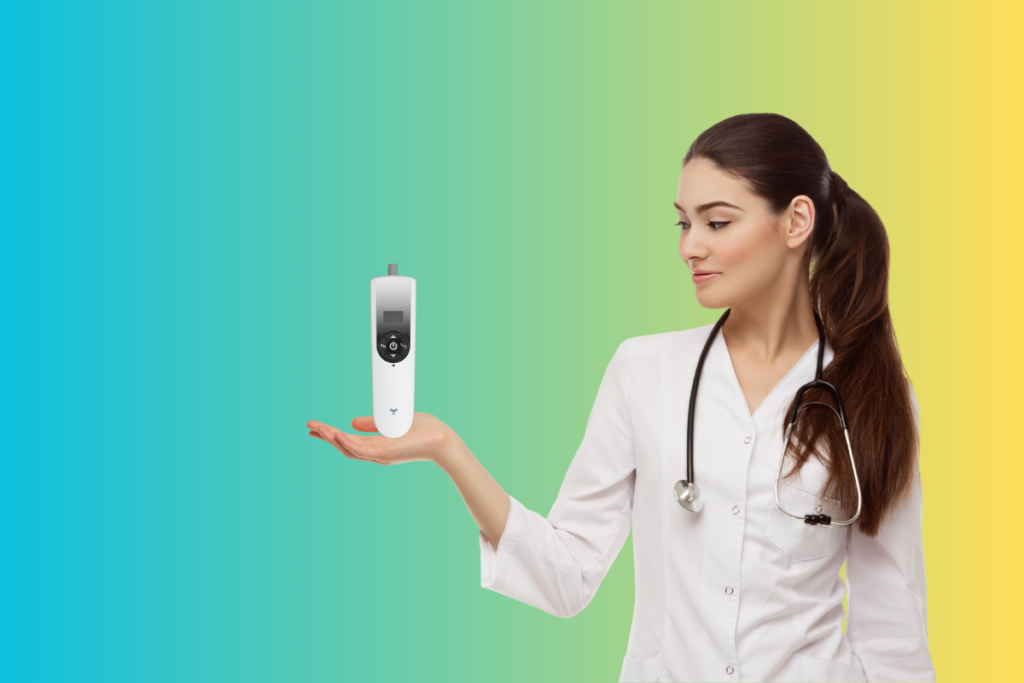Peripheral neuropathy is a condition that affects the peripheral nerves and causes pain, numbness, and tingling in the extremities. It can be caused by a number of factors, including diabetes, chemotherapy, and certain medications. Early diagnosis is important to prevent further nerve damage and the development of more serious complications. One tool that is commonly used for diagnosing peripheral neuropathy is the biothesiometer.
What does a Biothesiometer do?
The biothesiometer is a non-invasive device that is used to measure the vibration perception threshold (VPT) of the skin. VPT is the lowest amplitude of vibration that a person can perceive, and it is a measure of the sensitivity of the peripheral nerves. The biothesiometer works by applying a small vibration to the skin at various points on the foot and measuring the patient’s response.
The device consists of a small handheld unit that produces the vibration, and a probe that is placed on the skin. The probe is controlled electronically and adjusted to vary the intensity of the vibration. The vibration frequency used in biothesiometry is typically between 50 and 200 Hz.
Biothesiometry is a painless and non-invasive test that can be performed in a doctor’s office or clinic. Patients do not need to prepare in any special way, and there are no risks associated with the test. The procedure takes only a few minutes to complete, and patients can return to their normal activities immediately after the test.
How is a Biothesiometer different from a tuning fork? Biothesiometry is a superior diagnostic tool compared to the traditional method of using a tuning fork for measuring vibration perception threshold (VPT). Tuning forks have been used for decades to measure VPT, but they have several limitations. Firstly, tuning forks can produce inconsistent results, and a skilled practitioner is needed to use them effectively. Secondly, they may not produce a consistent frequency and amplitude of vibration, which can affect the accuracy of the test. In contrast, biothesiometers are designed to produce a consistent frequency and amplitude of vibration. This consistency helps ensure the accuracy of the test and allows for more reliable and objective measurements.

Moreover, biothesiometers are automated and easier to use, eliminating the need for a highly trained practitioner. Another advantage of biothesiometers is their sensitivity in detecting changes in VPT that may not be noticeable with a tuning fork. Biothesiometers can measure VPT more precisely and accurately, making it an essential tool for detecting peripheral neuropathy in its early stages. This early detection allows for prompt treatment and better outcomes for patients.
When is the Biothesiometry test recommended?
Biothesiometry is particularly useful in the diagnosis of diabetic peripheral neuropathy. Diabetes is a common cause of peripheral neuropathy, and it is estimated that up to 50% of people with diabetes will develop neuropathy at some point in their lives. Early diagnosis of diabetic neuropathy is important because it can be treated with medication and lifestyle changes. However, many people with diabetes do not experience symptoms of neuropathy until it has progressed to a more severe stage. Biothesiometry can detect peripheral neuropathy in its early stages, allowing for earlier intervention and better outcomes.
Biothesiometry is also useful in the diagnosis of other types of peripheral neuropathy, including those caused by chemotherapy, alcoholism, and certain medications. It can also be used to monitor the progression of neuropathy over time, which can help doctors to adjust treatment plans as necessary.
What do the results of the Biothesiometry test indicate?
The results of a biothesiometry test are expressed in terms of the VPT. A higher VPT indicates a reduced sensitivity to vibration, which is a sign of peripheral neuropathy. The results are typically reported in Vibration units or Volts (V) and a range between 0 to 50 V is tested. A value above 25 V indicates that you have a high chance of neuropathy, 15 V to 25 V indicates you have intermediate risk and less than 15 V indicates that you are in the normal range.
When should I undergo neuropathy screening?
Diabetes patients should undergo neuropathy screening at least once a year, but the frequency may vary depending on the patient’s risk factors, age, and duration of diabetes. Annual screening is recommended for all diabetes patients because neuropathy is a common complication of diabetes that can lead to severe health problems, including foot ulcers, infections, and amputations. However, patients who have had diabetes for many years or those with poor glycemic control are at higher risk of developing neuropathy and may need more frequent screening.
In some cases, patients may need to undergo neuropathy screening more frequently, such as those with pre-existing peripheral neuropathy or other risk factors for neuropathy, including smoking, alcohol consumption, and a family history of neuropathy.
Therefore, it is essential to work with a healthcare professional to determine an appropriate screening schedule based on individual risk factors and medical history. Regular screening for neuropathy is critical to identify the condition early, when it is more manageable, and to prevent serious complications that can lead to disability or even death.
Summary
In conclusion, biothesiometry is a non-invasive and painless method for detecting peripheral neuropathy. It is particularly useful in the early diagnosis of diabetic neuropathy, but it can also be used to diagnose other types of neuropathy and monitor the progression of the condition over time. It is a valuable tool for doctors in the diagnosis and treatment of peripheral neuropathy. If you are experiencing symptoms of peripheral neuropathy, such as pain, numbness, or tingling in your extremities, talk to your doctor about whether biothesiometry may be an appropriate diagnostic tool for you. Those who have diabetes should undergo screening for neuropathy at least annually as part of their medical care.
